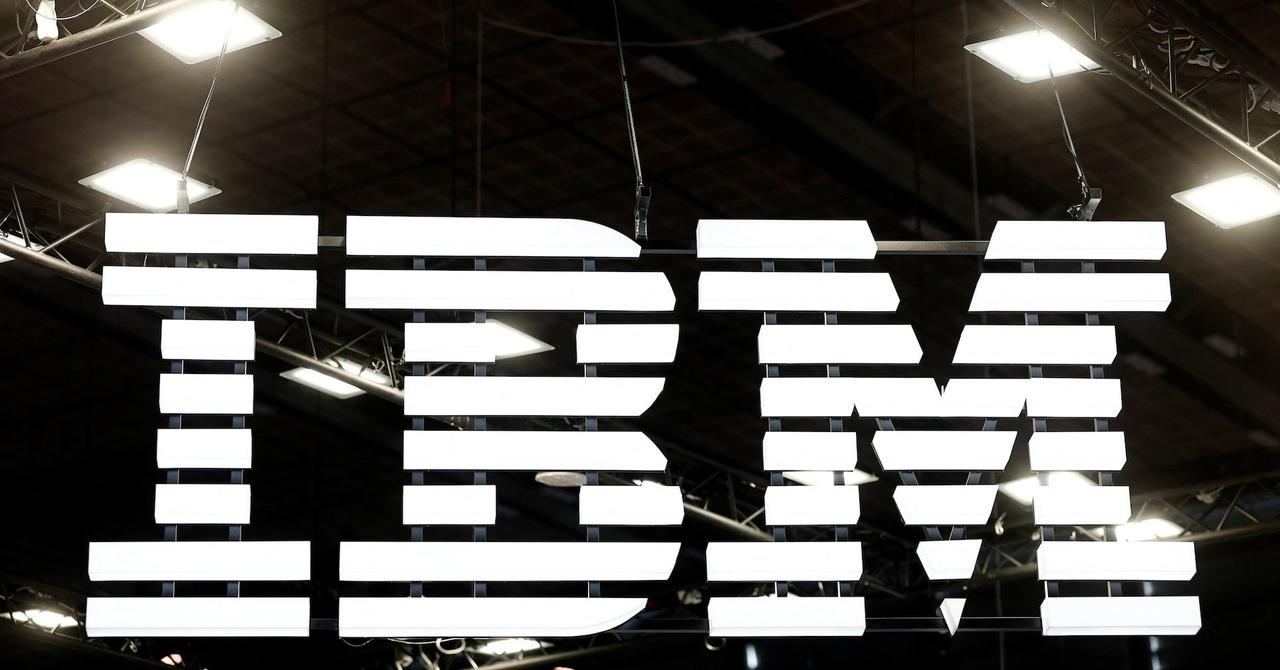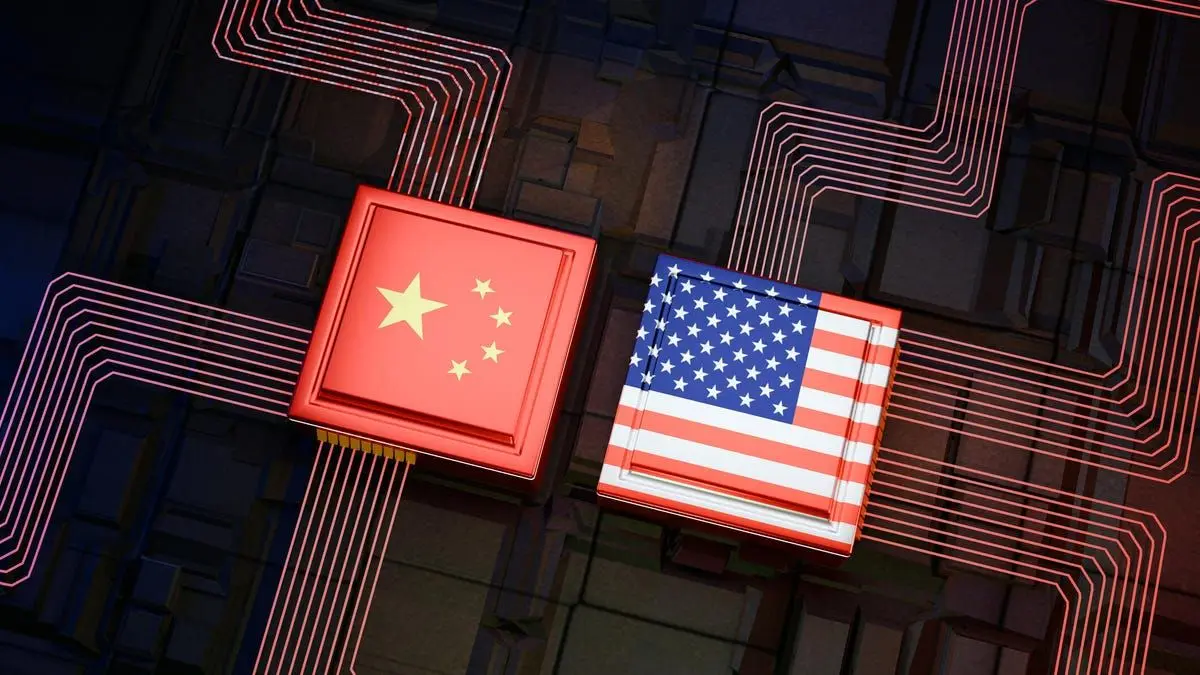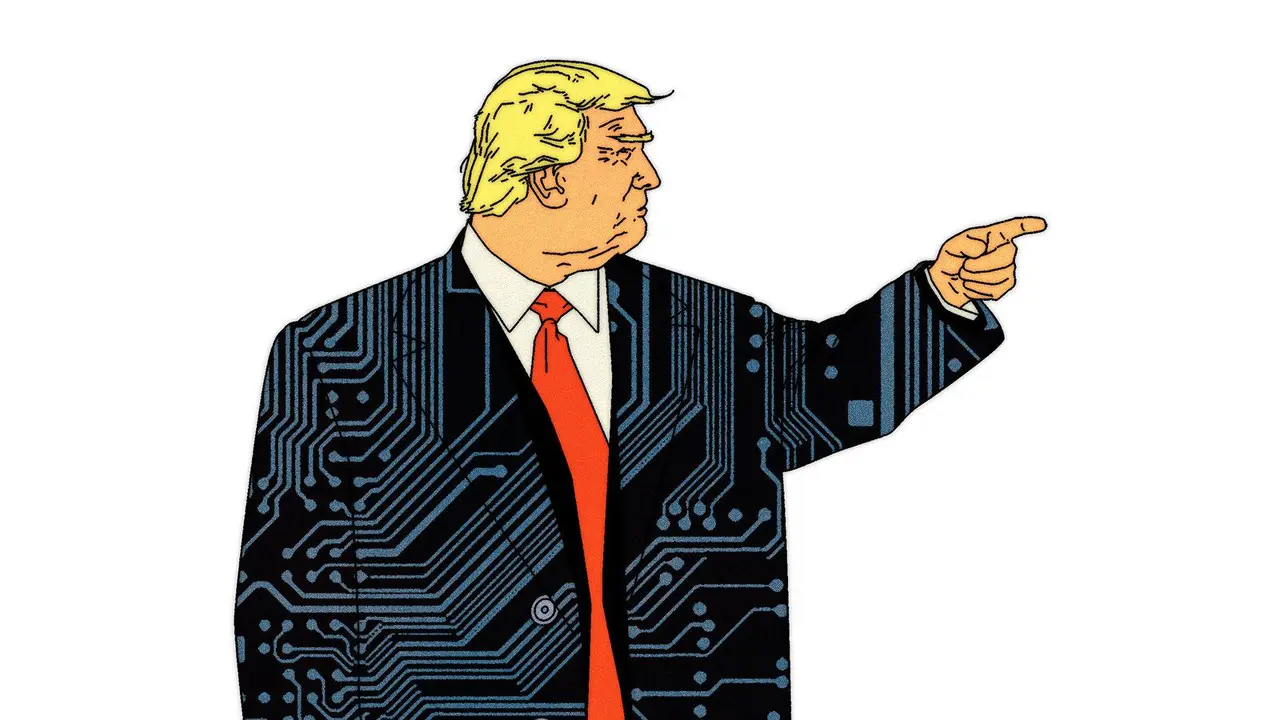IBM Beats Forecasts and Navigates Economic Uncertainty with AI Growth
4 Sources
4 Sources
[1]
IBM beats forecasts and says it's well-positioned to weather a trade war - SiliconANGLE
IBM beats forecasts and says it's well-positioned to weather a trade war Expressing confidence that it can weather the winds of an uncertain economic climate, IBM Corp. today reported revenue and earnings that beat analysts' expectations and reaffirmed its guidance for the full fiscal year. First-quarter earnings of $1.60 per share were down from $1.68 a year earlier but ahead of consensus estimates of $1.42. Revenues rose .5% to $14.54 billion and beat expectations of $14.39 billion. Growth was led by IBM's software segment, which grew 9% in constant currency to $6 billion. Software is now about 45% of IBM's business, with an 80% recurring revenue rate. The hybrid cloud business led by Red Hat grew 13%, its seventh straight quarter of mid-teens percentage growth. Automation revenue was up 15%, and data grew 7%. IBM's consulting segment revenues were flat at $5.1 billion as "clients delay decision-making in discretionary projects," according to Chief Financial Officer James Kavanaugh. IBM is "cautious on consulting's contribution this year" in light of customer uncertainty about the impact of the Trump administration's fluctuating tariff policy, Kavanaugh said. However, he noted, "through the first three weeks of the second quarter, we have not seen any material change in client buying behaviors." IBM expects its consulting business to grow between 5% and 6% per year for the foreseeable future and sees strategic value in its ability to drive infrastructure sales. Chief Executive Arvind Krishna (pictured) noted that "Consulting is more susceptible to discretionary pullbacks and DOGE-related initiatives," referring to the Department of Government Efficiency. However, he said the effect on IBM's overall business is expected to be modest. "We process veterans' benefit claims, we help process how the [General Services Administration] does procurement. We help implement payroll systems. I don't think of these as optional," he said. "We see them carrying on." IBM said it expects second-quarter revenue of between $16.4 billion to $16.75 billion, ahead of consensus forecasts of $16.31 billion. Despite the generally upbeat earnings report, IBM stock dropped more than 6% in early after-hours trading. Its stock is up nearly 12% this year while the S&P 500 has dropped more than 8%. Reflecting a focus on cost controls, IBM reported a gross profit margin of 55.2% percent, up from 53.5% a year earlier. Its pre-tax income margin of 8% was up from 7.5%. Kavanaugh said the company has embedded artificial intelligence across more than 70 workflows and reduced spending by more than $1 billion through supply chain efficiencies. "We exited 2024 at $3.5 billion of annual run rate savings, and we continue to see these efforts play out in our margin performance this quarter," Kavanaugh said. "These actions create a flywheel that allows us to invest back in our business, increase our financial flexibility and deliver margin expansion." Executives said IBM is well-positioned to withstand a trade war, with just 5% of its spending on imported goods. Federal government contracts also constitute less than 5% of revenue. "In the near term, uncertainty may cause clients to pause and take a wait-and-see approach," said Chief Executive Arvind Krishna. "However, the value of hybrid cloud automation, data sovereignty and on-premises solutions becomes even more critical in volatile windows." He said IBM is forecasting "a small slowdown [in gross domestic product], not a big slowdown." Kavanaugh said the impact of current US tariff policies on IBM "is minimal. While we have limited direct exposure outside the United States, we are tactically evaluating alternative sources and other strategies to mitigate tariffs," he said, causing inventories to rise about 10% in the quarter. Executives also touted what they said was the company's head start in AI, with over $6 billion in bookings to date and $1 billion in the last quarter. The AI business also has a flywheel effects as "We our infrastructure segment play a larger role as clients bring AI to their data," said Krishna said. Infrastructure revenues of $2.9 billion were down 4%, mainly due to a 14% drop in sales of the Z16 mainframe, which is at the end of its lifecycle and is due to be replaced next month. The successor Z17 "delivers enhanced AI acceleration through multi-modal AI capabilities, new security features to protect data and tools that leverage AI for improving system usability," Krishna said. "Its value proposition particularly resonated with clients, given significantly lower power requirements, higher capacity growth, and increased performance."
[2]
IBM Q1 2025 Earnings: CEO Krishna Maintains Financial Forecast Despite DOGE Cuts, Economic Uncertainty
'While it is still very early in the second quarter, we have not seen a material change in client buying behavior,' IBM CEO Arvind Krishna said on the call. Despite the cuts to IBM's federal business by the Elon Musk-led U.S. Department of Government Efficiency (DOGE) and economic uncertainty from global tariffs, IBM added another $1 billion-plus quarter over quarter to its generative artificial intelligence book of business and maintained its full-year guidance on revenue growth and free cash flow. However, Arvind Krishna-CEO of the Armonk, N.Y.-based maker of mainframe, GenAI and cloud products-warned that a slowing economy could hit multiple divisions within IBM, including its consulting arm and its Red Hat subsidiary. Executives revealed IBM's latest performance Wednesday during its quarterly earnings call, covering the three months ended March 31. In an unusual move, the vendor also forecasted its second fiscal quarter revenue, telling analysts to expect between $16.4 billion and $16.75 billion. "While it is still very early in the second quarter, we have not seen a material change in client buying behavior," Krishna said on the call. [RELATED: IBM Sets June Date for AI Agent Era z17 Mainframes] IBM's GenAI book of business now totals $6 billion inception to date. It forecasts full-year revenue growth of at least 5 percent year over year and full-year free cash flow of about $13.5 billion. In 2025, IBM is working to add more qualified partners, increase the overall percentage of company revenue that comes through the channel and improve partner technical skills, according to CRN's 2025 Channel Chiefs. When asked about why IBM forecasted its second quarter results, CFO Jim Kavanaugh said he "felt obligated" given the uncertain economy-including the U.S. dollar weakening about 9 percent over the last three weeks. "The magnitude and the breadth of the U.S. dollar depreciation we have not seen in quite some time," he said. Krishna said that IBM did not see a slowdown during the quarter in its software consumption business in transaction processing and Red Hat. But in the event of negative global gross domestic product (GDP) and a recession, IBM could see "a small slowdown" in the Red Hat part of the software consumption business and a slowdown in the transaction processing business, Krishna said. IBM is not projecting a recession "from everything that we can see and read," Krishna said. Red Hat represents between 10 percent and 20 percent of IBM's total business. Kavanaugh said IBM is "seeing clients delay decision-making, especially in discretionary projects, which impacted our in-period signings" in consulting. But the vendor "had good growth in transformational offerings like hybrid cloud and data as well as application management and cloud platform engineering services," he said. IBM "had a couple of contracts that were impacted in the first quarter" due to the cost-cutting activities of DOGE, Krishna said. Kavanaugh put the total of money lost to DOGE cuts at less than $100 million in backlog over multiple years. Multiple media reports have said that IBM lost government business due to Trump administration cuts at the U.S. Agency for International Development (USAID). Most of IBM's federal government work is in mission-critical work that can't be cut, Krishna said. "We actually process veterans benefit claims," he said. "We help process how the GSA (General Services Administration) does procurement. We help implement payroll systems. I don't think of these as optional. Now, are there some areas around the edges which could be viewed as discretionary? Yes. But in our case, that is the minority of our business, not the majority." Krishna warned "it's hard to predict where that goes over the rest of the year" and that "if there is pressure in the economy, consulting tends to see headwinds before other parts of the business." Kavanaugh said that IBM is still bullish on consulting continuing to grow 5 percent to 6 percent over the decade. Plus, consulting has a multiplier effect to the business, acting as "the tip of the spear" in bringing customers to more offerings within the IBM product portfolio. IBM's federal business accounts for less than 5 percent of its total revenue and less than 10 percent of its consulting business, the CFO said. IBM Consulting-No. 6 on CRN's 2024 Solution Provider 500-has less than 3 percent market share in federal consulting. Sixty percent of the federal business is consulting-more easily cut-and the rest is high-value, annuitized technology revenue under contract. IBM Consulting was about flat year over year at $5.1 billion. That still represented growth quarter over quarter after consulting fell 1.1 percent the prior quarter. Strategy and technology consulting fell 1 percent. "Intelligent operations" was about flat. "We've been actively engaged with the administration, as you can quite imagine," Kavanaugh said. Krishna opened up the call with a compliment to President Donald Trump. "We appreciate the administration's focus on economic growth and rational regulation, which will strengthen the U.S. competitive position," he said. "We believe this will result in long-term value creation and make it easier for technology to contribute to economic growth." When asked about the state of AI, Krishna said he has seen the market mature in a similar way to past transformational technology such as PCs and mobile phones. Clients have moved on from a focus on the semiconductors and systems to the application layer, looking to improve customer experiences and improve enterprise operations. "It is shifting to those conversations," he said. "I believe that that is where the next two to three years of success in AI is going to go." IBM has leveraged its own technology to become more efficient, Kavanaugh said. For example, it used hybrid cloud, automation and AI tools to decrease spending by more than $1 billion in supply chain and service delivery. IBM's leadership called attention to Red Hat taking share in the virtualization space as customers of legacy VMware technology look to alternatives after the vendor changed pricing-similar to a change at virtual desktop vendor Citrix. The disruption has led to the likes of Nutanix, Microsoft and Parallels also seeing customer interest in their technology. "Virtualization, already, just the last couple quarters, we've already notched in over $200 million of annualized bookings," Kavanaugh said. "We've been building a pipeline that is well north of half a billion dollars worth of virtualization." Red Hat grew about 13.5 percent year over year in the quarter and saw its seventh consecutive quarter of high teens annual contract value (ACV) bookings, Kavanaugh said. The virtualization, automation and Linux businesses grew double digits during the quarter. Although Red Hat's growth fell quarter over quarter from 17 percent ignoring foreign exchange, Kavanaugh said "we're very pleased with our Red Hat performance entering the year." The 20 percent of Red Hat's business that is consumption based didn't decline, but it did moderate to high single digits, Kavanaugh said. "Very different profile from where we were a year ago, by the way, when we were trying to accelerate to get the double digits for the year," he said. Red Hat Enterprise Linux (RHEL) grew 13 percent year over year. OpenShift grew 23 percent and has $1.5 billion in annual recurring revenue (ARR). Ansible grew in the mid teens, the CFO said. Krishna called Red Hat OpenShift the "the leading platform" for containerization and running servers on-premises and in private clouds. These Red Hat customers are also now looking to the vendor's virtualization capabilities on their environments. IBM sees a flywheel that should also benefit Ansible and newly acquired HashiCorp, Krishna said. The virtualization play isn't just about taking out competitors, he said. "It is going to be much more about a platform, and people are making a decision, which platform can I depend upon for the next 10 to 20 years?" With global tariff spats potentially causing supply chain disruptions, Kavanaugh said that IBM "proactively took actions to bolster our supply chain ahead of our z17 launch, resulting in higher inventory levels." "Over the last several years, we have strategically diversified and streamlined our supply chain," Kavanaugh said. "Goods imported to the U.S. represent less than 5 percent of our overall spend. And under current U.S. tariff policy, the impact to IBM is minimal." IBM is also "tactically evaluating alternative sources and other strategies to mitigate tariffs" where it affects the vendor overseas, he said. For clients that don't want to spend capital on new mainframes, IBM has offered leasing for a long time worldwide, Krishna said. "It is surprising how many people, even with great balance sheets of their own, often choose to do that" Krishna said. "It doesn't really impact our balance sheet, because in that case, we have a receivable against the debt that we take on to do that. So we would happily do that for any credit-worthy client." Krishna is optimistic on strong mainframe purchasing through 2025 and into the first half of 2026. Economic uncertainty also helps the business "because those who are thinking about capacity expansion at the end of the year are wondering whether it's more advantageous to them to do it earlier because there is a financial benefit if you have it, as opposed to pay for overages, which is certainly possible," he said. Kavanaugh added: "We run 45 of the top 50 banks around the world. Nine of the top 10 retailers. Four to five top 10 airlines of the world. We are going to protect those clients and what the mainframe brings to the table." IBM saw revenue of $14.5 billion during the quarter, up 2 percent year over year ignoring foreign exchange. IBM's software division saw revenue grow 9 percent year over year ignoring foreign exchange, contributing $6.3 billion. Software's annual recurring revenue (ARR) grew to $21.7 billion, up 11 percent year over year. Automation grew 15 percent. Data grew 7 percent. And transaction processing grew 2 percent. Infrastructure fell 4 percent year over year, delivering $2.9 billion in revenue. Hybrid infrastructure fell 7 percent. IBM Z-in the early days of a refresh cycle-fell 14 percent. Infrastructure support revenue was about flat year over year ignoring foreign exchange. Kavanaugh said the IBM Power portfolio saw "product cycle dynamics" as a headwind. But the storage business "delivered another quarter of double-digit growth." The vendor saw $4.4 billion in net cash from operating activities and $2 billion of free cash flow. IBM ended the first quarter with $17.6 billion in cash, restricted cash and marketable securities-giving the vendor room to work with for future potential acquisitions. IBM's stock traded at about $230 a share after hours Wednesday, down about 7 percent.
[3]
IBM posts sales topping estimates, says DOGE hit 15 contracts
The strong results in an uncertain economic environment show the "durability and resiliency" of IBM's business, Chief Financial Officer Jim Kavanaugh said in an interview. Investors and business leaders have been rattled by the economic implications of changing U.S. government policy, such as broad tariffs and reduced federal spending led by Elon Musk's Department of Government Efficiency. In response, IBM took the unusual step of giving quarterly guidance, saying that sales will be about $16.4 billion to $16.8 billion in the period ending in June. Analysts, on average, projected $16.3 billion. IBM also maintained it full-year forecast of about $13.5 billion in free cash flow and at least 5 per cent revenue growth in constant currency. The shares increased about 5 per cent in extended trading after closing at $245.48. Amid a broad market selloff in recent weeks, IBM has been a relative safe haven. The stock has jumped 12 per cent this year, compared with a 8.6 per cent decline in the S&P 500 Index. Kavanaugh said about 15 of IBM's contracts with the federal government have been canceled or paused, amounting to about $100 million in future payments. The Trump administration has said it will reduce spending across the government, raising concerns among investors about the potential impact on tech companies. Federal sales amount to less than 5 per cent of IBM's overall revenue, Kavanaugh added. Big Blue has worked to transform itself from a conventional computer company into one focused on high-growth software and services. It has used acquisitions to expand the company's products, including a takeover of HashiCorp Inc. that was completed in February and the purchase of Apptio for $4.6 billion in 2023. Bookings for AI consulting and software have exceeded $6 billion since mid-2023, the Armonk, New York-based company said. That is up from the $5 billion IBM disclosed during its last quarterly earnings report in January. About 80 per cent of the bookings come from the consulting unit, with the rest from software. Software continued to be IBM's fastest-growing segment, with sales expanding 7 per cent to $6.3 billion. Revenue declined 2 per cent to $5.1 billion in the consulting unit. Each were in line with estimates. Infrastructure sales dropped 6 per cent to $2.9 billion. Earlier this month, IBM unveiled its latest mainframe system, saying that some business data will remain on customer-owned servers and never be hosted on the cloud.
[4]
IBM stumbles despite commitment to transparency
For Q1 2025, IBM announced an increase in revenue, driven by software, while the decline in profit clouded its results. However, management remains confident about the year ahead. It acknowledges the current political instability, between tariffs and budget cuts by the DOGE, but insists that the impact will be limited. According to CFO James Kavanaugh, these factors will not jeopardize the annual targets. He even provided a forecast for Q2, a rare move for IBM. Software revenue rose 7.4% y-o-y. This is less than the 10.4% growth in the previous quarter, but enough to offset declines of 2% and 6% in consulting and infrastructure. In all, IBM posted quarterly revenue of $14.51bn, compared with $14.46bn a year earlier. However, profit fell to $1.1bn, compared with $1.6bn last year. This decline was poorly received by the markets, with the stock losing 6.5% in after-hours. "Software momentum continued to drive revenue growth, although we saw a general slowdown in the broader portfolio," said Brent Thill, an analyst at Jefferies. Software AI stood out, with an additional $200m this quarter. The AI portfolio now exceeds $6 billion since its launch, but consulting remains dominant, accounting for around 80% of the overall figure. In an uncertain environment, IBM is focusing on a reassuring message. "Management has suggested minimal impact on IBM under the current US tariff policy," Brent Thill said. Indeed, less than 5% of the company's overall spending is on goods imported into the US. At DOGE, federal consulting contracts account for less than 10% of consulting business, and their share of total revenue does not exceed 5%. Recently canceled projects account for less than $100m out of an order book of OVER $30bn. Another notable move is the publication of a forecast for the second quarter. James Kavanaugh explains this decision by citing the exceptional circumstances: "Given the unprecedented uncertainty currently facing the market, we have decided to issue a revenue guidance range for the second quarter. We believe it is our duty to be as transparent as possible with our investors." IBM is therefore forecasting revenue of between $16.40bn and $16.75bn for the quarter ending in June, above the average market forecast of $16.33bn.
Share
Share
Copy Link
IBM reports strong Q1 2025 results, maintains full-year guidance despite economic challenges, and highlights significant growth in AI business.

IBM Reports Strong Q1 2025 Results Amid Economic Uncertainty
IBM Corporation has reported better-than-expected first-quarter results for 2025, demonstrating resilience in the face of economic uncertainties. The tech giant beat analysts' forecasts and maintained its full-year guidance, despite concerns over trade wars and government spending cuts
1
2
.Financial Performance Highlights
IBM's Q1 2025 results showed:
- Revenue of $14.54 billion, up 0.5% year-over-year, surpassing expectations of $14.39 billion
1
- Earnings per share of $1.60, down from $1.68 a year earlier but ahead of consensus estimates of $1.42
1
- Software segment growth of 9% in constant currency to $6 billion
1
- Hybrid cloud business growth of 13%, marking its seventh consecutive quarter of mid-teens percentage growth
1
AI and Software Drive Growth
IBM's software segment, now comprising about 45% of its business, led the company's growth. The company reported:
- Automation revenue up 15%
1
- Data revenue growth of 7%
1
- AI bookings exceeding $6 billion since mid-2023, with $1 billion added in the last quarter
2
3
CEO Arvind Krishna highlighted the shift in AI focus from hardware to applications, stating, "It is shifting to those conversations. I believe that that is where the next two to three years of success in AI is going to go."
2
Navigating Economic Challenges
Despite positive results, IBM faces potential headwinds:
- Consulting segment revenues remained flat at $5.1 billion due to clients delaying discretionary projects
1
- Concerns over the impact of the Trump administration's fluctuating tariff policy
1
- Cuts to IBM's federal business by the Department of Government Efficiency (DOGE)
2
However, IBM maintains a positive outlook:
- Forecasting Q2 2025 revenue between $16.4 billion and $16.75 billion, ahead of consensus estimates
1
3
- Reaffirming full-year guidance of at least 5% revenue growth and free cash flow of about $13.5 billion
3
Related Stories
Mitigating Risks and Focusing on Efficiency
IBM has taken steps to address potential risks:
- Embedding AI across more than 70 workflows and reducing spending by over $1 billion through supply chain efficiencies
1
- Limiting exposure to imported goods, with just 5% of spending on such items
1
- Federal government contracts constituting less than 5% of total revenue
1
3
CFO James Kavanaugh emphasized the company's cost control efforts, stating, "We exited 2024 at $3.5 billion of annual run rate savings, and we continue to see these efforts play out in our margin performance this quarter."
1
Looking Ahead
While acknowledging short-term uncertainties, IBM remains optimistic about its long-term prospects:
- Expecting consulting business to grow between 5% and 6% annually for the foreseeable future
1
- Highlighting the strategic value of consulting in driving infrastructure sales
1
- Emphasizing the importance of hybrid cloud, automation, and data sovereignty solutions in volatile markets
1
As IBM navigates through economic uncertainties, its focus on AI, software, and efficient operations positions the company to weather potential challenges while capitalizing on emerging opportunities in the tech sector.
References
Summarized by
Navi
[1]
[4]
Related Stories
IBM's Q2 Earnings Beat Estimates, Driven by AI Mainframe Sales, but Software Segment Disappoints
24 Jul 2025•Business and Economy

IBM Surpasses Q2 Expectations with Strong AI Growth and Solid Financial Performance
25 Jul 2024

IBM's Q3 2024 Results: AI Momentum Amid Mixed Performance
24 Oct 2024•Business and Economy

Recent Highlights
1
Nvidia locks in $20 billion Groq deal, securing AI chip rival's technology and talent
Business and Economy

2
Chinese AI Models Close Gap With US Systems as Open-Source Strategy Reshapes Global Tech Order
Policy and Regulation

3
Doctors warn AI companions threaten mental health as kids turn to chatbots for friendship
Health





